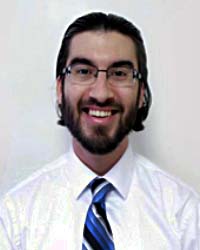Mechanical engineer Edward Bednarz was awarded the U.S. Patent on Nov. 13, 2013, after designing a radar antenna safety brace.
Bednarz was working at the Tobyhanna Army Depot in Tobyhanna, Pa., when he was assigned this project after an accidental death of an Army soldier was killed while repairing a radar antenna overseas in 2010.

“The cool thing about the project is that I was involved in everything from start to finish,” said Bednarz in a press release. “Along with Bryan Causer, my co-inventor, we started with a conceptual drawing on the computer.”
The antenna searches for enemy missiles and the brace that Bednarz designed now allows mechanics and soldiers to safely perform maintenance underneath the antenna without risk of injury or death. Tobyhanna Army Depot is now currently manufacturing the safety braces for deployment in the field for all soldiers and mechanics.
Almost immediately after learning he was awarded the U.S. Patent, Bednarz went online to confirm it was recorded. He then realized he was one of over 8.5 million registrants to receive a patent for The U.S. Patent and Trademark Office since 1790.
Bednarz is no stranger to the patent application process. In July 2012 he applied for a patent for a deflection plate on a mobile dynamometer which allows for an optimal deflection while maintaining a constant stress distribution on a cantilever beam. He also applied for a third patent last August for his design of a force transducer. The device is a methodology of identifying magnitudes and locations of loads on a beam, such as a large scale bridge.
In September, 2013, Bednarz was named visiting assistant professor at Wilkes University. He currently teaches four undergraduate mechanical engineering courses and also serves as a master’s advisor. Bednarz also taught a graduate course in the fall semester that he designed which also applies theories from his doctorate dissertation.
Bednarz received his bachelors of science in mechanical engineering from Wilkes University. He also received his masters of science and doctorate of philosophy in mechanical engineering from the University of Maryland Baltimore County.
The design project was very complex and required Bednarz to really tap in and apply his educational experience to figure out the materials needed for the project. He also had to figure out the sizes of the radar antenna to validate whether or not the brace could sustain a variety of outside forces.
With using his educational background and previous experiences Bednarz decided to use a free body diagram from the wind speed and weight of the radar antenna to calculate the force on the brace, which he then tested through finite element analysis.
Bednarz has a strong feeling that his future at Wilkes University will include helping engineering students pursue careers in testing, designing, manufacturing and project management. With the skills and experience he has acquired from Wilkes and working as an engineer for the army, it has allowed him to learn, practice and develop new techniques for teaching mechanical engineering. The students at Wilkes pursuing an engineering degree will be able to benefit a great deal.